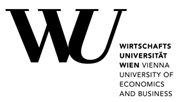Department of Economics Working Papers,
Vienna University of Economics and Business, Department of Economics
Asymmetric information in the regulation of the access to markets
Simone Ghislandi () and Michael Kuhn ()
Additional contact information
Simone Ghislandi: Department of Socioeconomics, Vienna University of Economics and Business
Michael Kuhn: Wittgenstein Centre, Vienna Institute of Demography
Abstract: It is frequently argued that the high costs of clinical trials prior to the admission of new pharmaceuticals are stifling innovation. At the same time, regulation of the access to markets is often justified on the basis of consumers’ inability to detect the true quality of a product. We examine these arguments from an information economic perspective by setting a framework where the incentives to invest in R&D are influenced by the information structure prevailing when the product is launched in the market at a later stage. In this setting, by changing the information structure, regulation (or the lack of) can thus indirectly affect R&D efforts. More formally, we construct a moral hazard – cum – adverse selection model in which a pharmaceutical firm exerts an unobservable effort towards developing an innovative (high quality) drug (moral hazard) and then announces the (unobservable) quality outcome to an uninformed regulator and/or consumers (adverse selection). We compare the outcomes in regard to innovation effort and expected welfare under two regimes: (i) regulation, where products undergo a clinical trial designed to ascertain product quality at the point of market access; and (ii) laissez-faire with free entry, where the revelation of quality is left to the market process. Results show that whether or not innovation is greater in the presence of entry regulation crucially depends on the efficacy of the trial in identifying (poor) quality, on the probability that unknown qualities are revealed in the market process, and on the preference and cost structure. The welfare ranking of the two regimes depends on the differential effort incentive and on the net welfare gain from implementing full information instantaneously. For example, in settings of vertical monopoly, vertical differentiation and horizontal differentiation with no variable cost of quality, entry regulation tends to be the preferred regime if the effort incentive under pooling is relatively low and profits do not count too much towards welfare. A complementary numerical analysis shows how the outcomes vary with the market and cost structure.
Keywords: adverse selection, (entry) regulation, moral hazard, pharmaceutical industry, R&D incentives
JEL-codes: D82; I18; L15; L51; O31 February 2016
Note: PDF Document
Full text files
wp219.pdf
Report problems with accessing this service to Sune Karlsson ().
This page generated on 2024-03-26 04:36:05.

